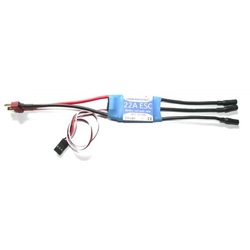 Our MultiRotor ESC and Motors have been out of stock for quite some time now. We are sorry if that has caused problems for any of our customers. He are workign with our suppliers to avoid such long delays in the future. While you have been waiting, we have made some changes to our multi-rotor ESC that now ship with the famous Simon K RapidESC firmware. This firmware is an open source project that aims to develop the best Standard ESCs are actually not designed for multirotor applications. They are programmed to increase and decrease the throttle command towards the motor in a gentle way. The reason for this is quite obvious. Imagine a motor accelerating and decelerating so abruptly in a helicopter or car... it would damage the gears and reductions in no time. In a multirotor application, we really want just the opposite. For the best multi-rotor performance you want to be able to change the motor speed, and thus the thrust, as fast as possible to achieve a perfectly stable platform. While the current ESCs used in most multrotor applications work considerably well, there is a lot of room for improvement. Using the same ESC, but loading it with dedicated optimized software, will increase the handling and stability of your multirotor greatly. The video below shows a comparison between a regular ESC and an ESC with the SimonK firmware. Features
For more information please visit the github page for the SImonK firmware https://github.com/sim-/tgy
Comments
|
Photo from Ronnie Garcia

 RSS Feed
RSS Feed
